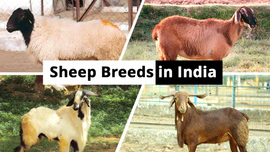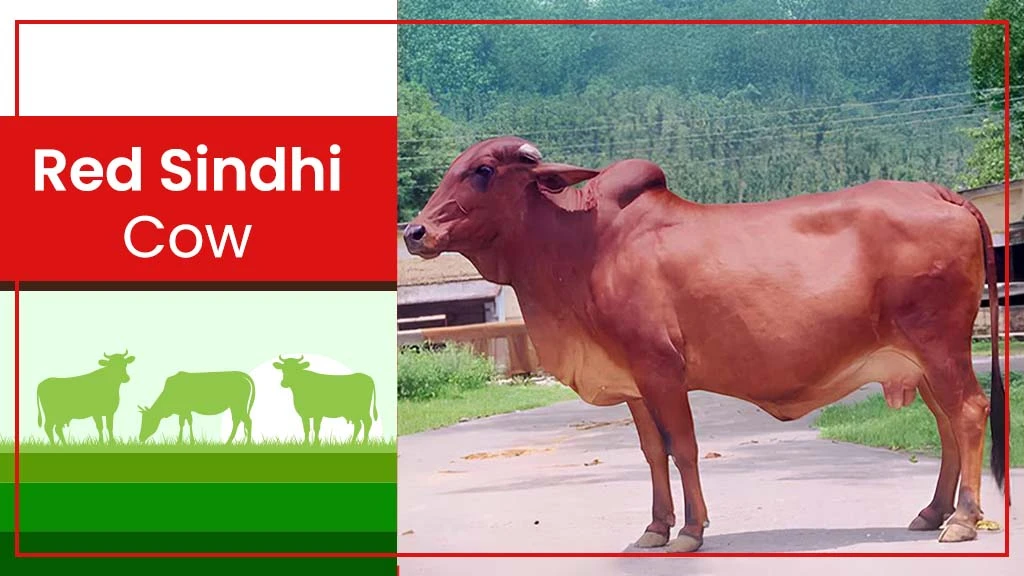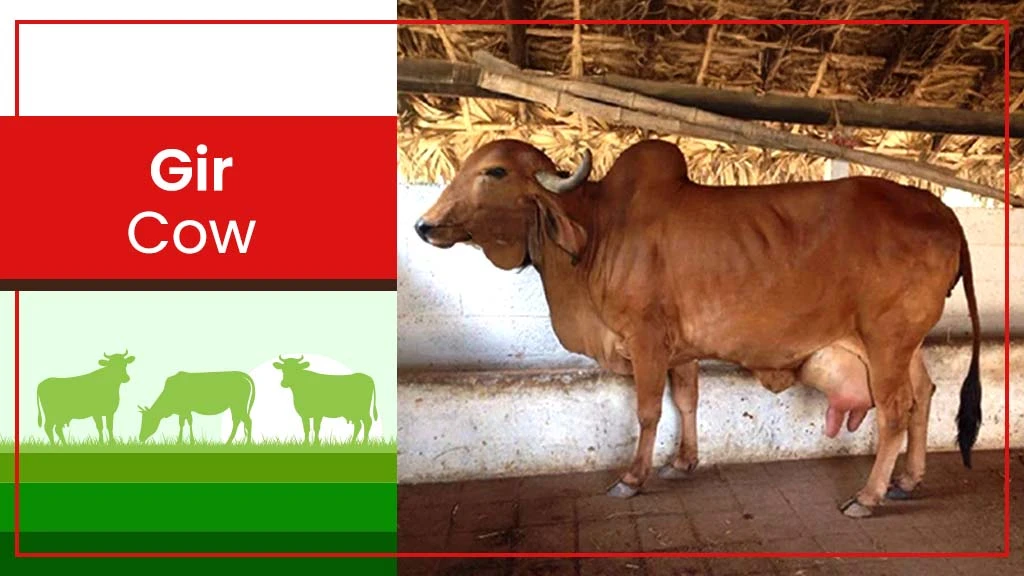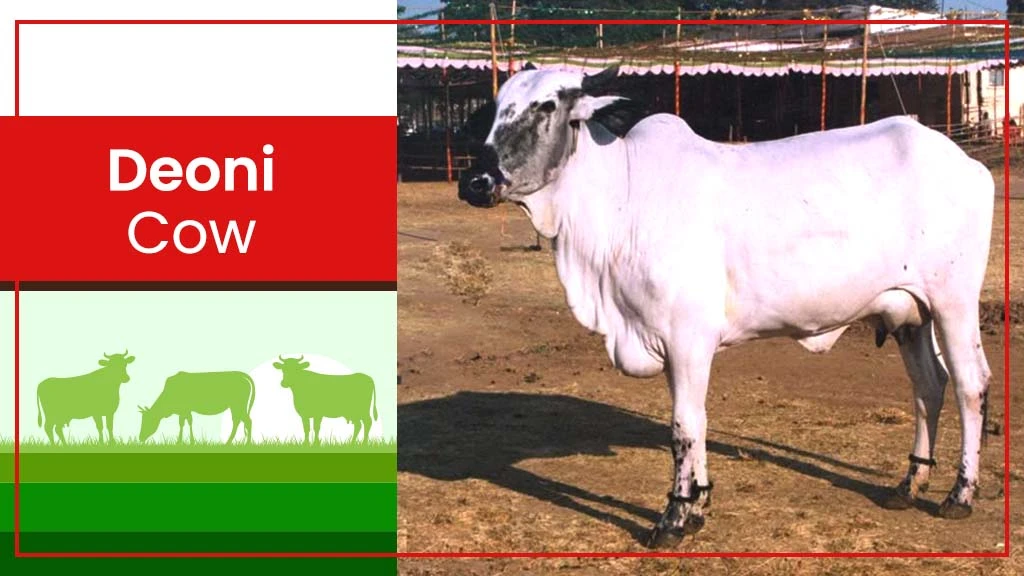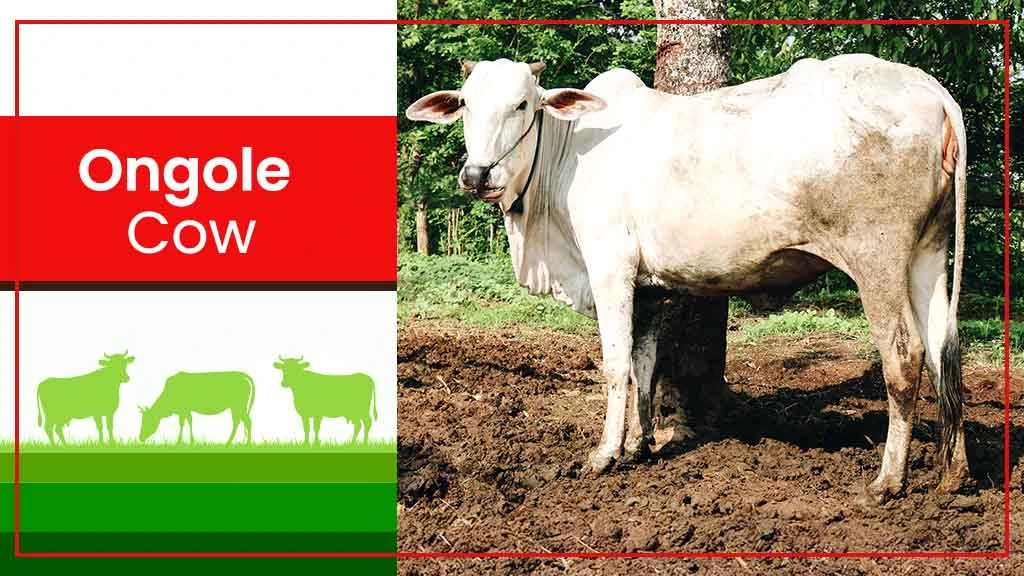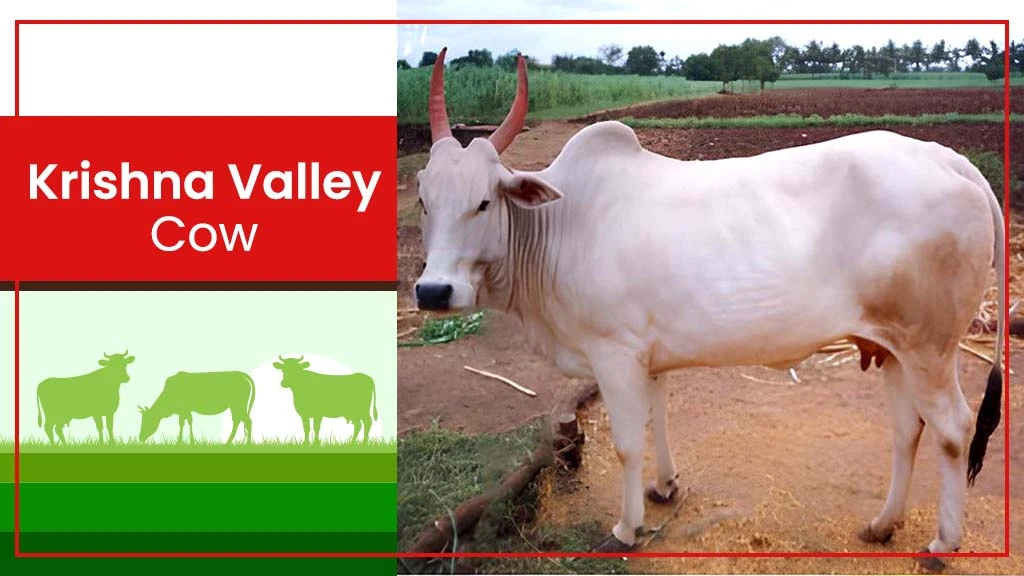
India has a wide variety of indigenous cows with rich biodiversity. The Indian cows and their characteristics play an important role in the lives of people. They are widely used in the dairy and draught purposes thus help in the development of the rural economy of the country. Some of the famous indigenous cow breeds are Red Sindhi, Gir, and Sahiwal. In today’s blog, we will explore all the top cow breeds of India with their origin and characteristics.
Table of Contents
Introduction to Cow Breeds
Cattle breeds are raised in India since ancient times for the milk and draught purposes. These animals are an essential aspect of Cattle Farming and Livestock Farming. The scientific name of the cow is Bos Taurus. The average cow's lifespan in India is 15 to 20 years. According to the 21st Livestock Census of India, the total number of cattle in the country was 193.46 million in 2019, showing an increase of 1.3% over the previous Census. The total number of milch animals (in-milk and dry) in cows and buffaloes is 125.75 million, an increase of 6% over the previous census.
Which are the Top 10 Cow Breeds in India?
According to ICAR, presently there are 54 well-defined registered Indian cattle breeds in India, including 1 synthetic cattle breed named Frieswal from Uttar Pradesh. These include pure milch cattle, draught cattle, and hybrid cattle. Some of the famous Indigenous breeds of cow are Red Sindhi, Gir and Sahiwal. Let's look at the top 10 Indian cow breeds by milk production per lactation.
Tharparkar Cow
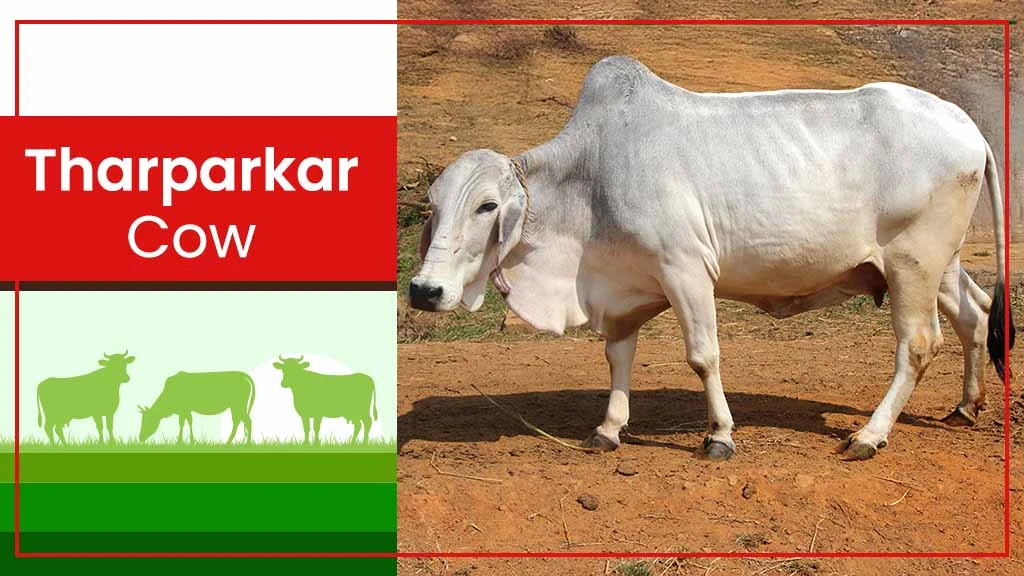
|
Breed Name |
Tharparkar (White Sindhi or Gray Sindhi) |
|
Originated |
Tharparkar District (Sindh, Pakistan) |
|
Average Milk Yield |
900-2000 kg (per lactation) |
|
Breed Type |
Dual Purpose (Milking and Draught work) |
|
Weight |
400 – 450 kg (Males) 350 – 400 kg (Females) |
Tharparkar is a hardy, dual-purpose Indian cow breed, originating from the Tharparkar district in Sindh, Pakistan. These cows are mainly found in the arid and semi-arid regions of western India, particularly in the Thar desert area of Rajasthan and parts of Gujrat. They are valued for both milk-production and draught purposes in agriculture. They are also known as Grey Sindhi or White Sindhi. These are medium to large built cows with white or light grey coats and lyre-shaped horns. This breed of cow is exceptionally well adapted to heat, drought and scarcity conditions, surviving solely on small bushy vegetation (Sewan grass). They also showcase good disease resistance.
Sahiwal Cow
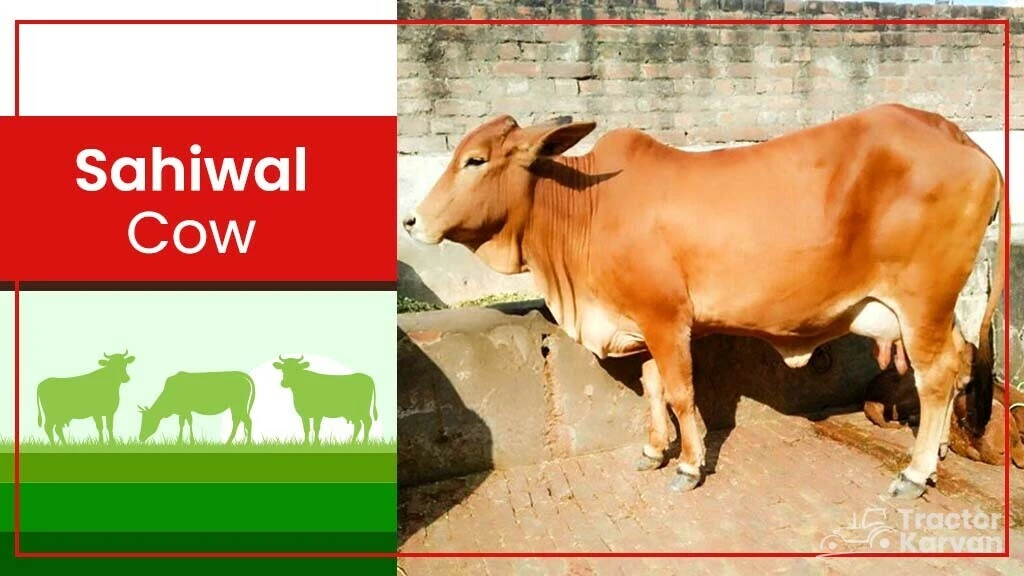
|
Breed Name |
Sahiwal (Lola, Montgomery, Multani) |
|
Originated |
Sahiwal District (Punjab province, Pakistan) |
|
Average Milk Yield |
1600 - 2000 kg (Per lactation) |
|
Breed Type |
Dual Purpose (Milking and Draught work) |
|
Weight |
400 – 450 kg (Males) 350 – 400 kg (Females) |
Sahiwal cow is a popular breed of Zebu cattle, originating from the Sahiwal area in Montgomery district of Punjab, Pakistan. This cow breed is highly valued for its dairy qualities and adaptability to various climate conditions. It is also prevalent in various regions of India, particularly Punjab, Haryana, Delhi, Uttar Pradesh, Bihar, and Rajasthan. It is known by names such as Lola (loose skin), Montgomery, Multani, Lambi Bar, and Teli. Their coats are brownish red in colour, varying from Mahagony to greyish red, with well-developed udders and short horns. Sahiwal cows are well-known for their high milk yield, ability to adapt to hard climates, illness resistance, and docility.
Red Sindhi Cow
|
Breed Name |
Red Sindhi |
|
Originated |
Sindh province (Pakistan) |
|
Average Milk Yield |
1100 – 2600 kg (Per lactation) |
|
Breed Type |
Milk Production |
|
Weight |
530 kg (Males) 325 Kg (Females) |
The Red Sindhi is a prominent dairy breed of zebuine cattle. It is native to Karachi and Hyderabad (Pakistan) regions. It is also known by the names Red Karachi, Mahi, and Sindhi. The breed is smaller, and rounder compared to White Sindhi (Tharparkar). They have a distinct red coat with white patches and short, curved horns. Red Sindhis are highly valued for their heat tolerance, tick resistance and overall hardiness, making them well suited for tropical climates.
Gir Cow
|
Breed Name |
Gir/Gyr (Bhodah, Desan, Gujarati) |
|
Originated |
Kathiawar (Gujrat) |
|
Average Milk Yield |
1200-1800 kg (Per Lactation) |
|
Breed Type |
Dual purpose (milking and draught work) |
|
Weight |
544 kgs (male) 310 kgs (female) |
The Gir cow is native to the Gir forest region of South Kathiawar, Gujarat. This cow breed is also found in Maharashtra and adjacent Rajasthan. It is one of the famous indigenous cow varieties in India. It is known by names such as Desan, Bhadwari, Kathiawari, Surati, and Gujarati. They are peculiarly famous for their curved horns resembling a 'half-moon'. They are typically white with dark red or chocolate-brown patches or sometimes black or purely red. They are revered for their robust health and resistance to many diseases.
Kankrej Cow
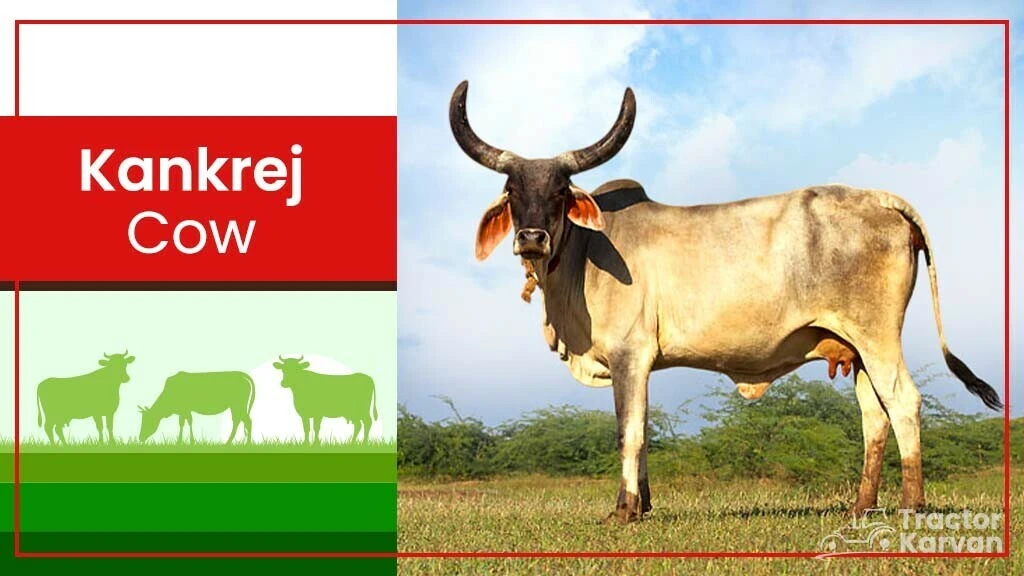
|
Breed Name |
Kankrej (Wadad or Waged and Wadhiar) |
|
Originated |
Rann of Kutch, Gujrat |
|
Average Milk Yield |
1700 – 1800 kg (Per Lactation) |
|
Breed Type |
Dual purpose (milking and draught work) |
|
Weight |
540 kg (male) 431 kg (female) |
The Kankrej cow is found in the Rann of Kutch in Gujarat and Barmer and Jodhpur district in Rajasthan. It is also known as Wadad or Waged and Wadhiar. It is used for both dairy and draught purposes. They are prized for their resilience, strength, and ability to adapt to hot and cold climates. Kankrej cow colour is a distinct silver-grey or iron grey. They have a prominent hump and lyre shaped horns. This cow breed is considered good for ploughing and carting purposes.
Deoni Cow
|
Breed Name |
Deoni (Dongari, Shevera, Balankya) |
|
Originated |
Deoni, Latur district (Maharashtra) |
|
Average Milk Yield |
636 – 1320 kg (Per Lactation) |
|
Breed Type |
Dual purpose (milking and draught work) |
|
Weight |
590 kg (male) 295 kg (Female) |
Deoni cows are found in Western Andhra Pradesh and the Marathwada region of Maharashtra and adjoining part of Karnataka. They are also known by other names, such as Dongari, Shevera, Balankya, and Dongerpati. They are black and white and are used for bullock and dairy purposes.
Ongole Cow
|
Breed Name |
Ongole (Nellore) |
|
Originated |
Guntur district (Andhra Pradesh) |
|
Average Milk Yield |
798 kg (Per Lactation) |
|
Breed Type |
Dual purpose (milking and draught work) |
|
Weight |
500 kg (male) 430 – 455 kg (male) |
The Ongole cow, also known as the Nellore breed, is a native of the Ongole taluk of Guntur district in Andhra Pradesh. The Ongole cow is popular for agricultural and dairy activities because of its strength, endurance, and adaptability to tropical climates. This is a large muscular breed with a distinctive hump and are typically white or light grey.
Krishna Valley Cow
|
Breed Name |
Krishna Valley |
|
Originated |
Karnataka |
|
Average Milk Yield |
900 kg (per lactation) |
|
Breed Type |
Draught work |
|
Weight |
550 kg (male) 325 kg (Female) |
The Krishna Valley cows are endemic to the black soil region of the River Krishna Valley in Karnataka and border districts of Maharashtra. They have a large, massive frame with deep, loosely built, short bodies. They are white in colour and dark in shade. They are also hybrid cattle, and hence, they are used for both dairy and draught purposes. The males are grey white with a darker shade on the forequarters and hindquarters, and the female cows are more whitish in appearance. Their tails are so long that almost reaches the ground.
Amrit Mahal Cow
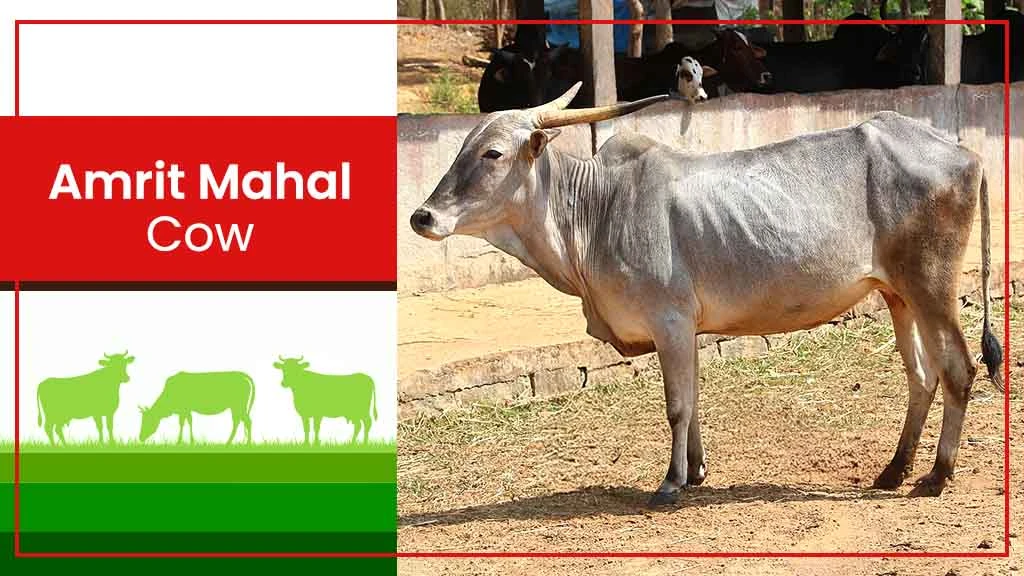
|
Breed Name |
Amrit Mahal |
|
Originated |
Mysore (Karnataka) |
|
Average Milk Yield |
572 kg (Per Lactation) |
|
Breed Type |
Draught work |
|
Weight |
500 kg (male) 318 kg (Female) |
Amritmahal cow breed is native to Hassan, Chikmagalur and Chitradurga district of Karnataka. These cows have black muzzle, feat and tail. They have sharp long horns in black colour. These cows are grey, but their shade varies from white to black.
Khillari Cow
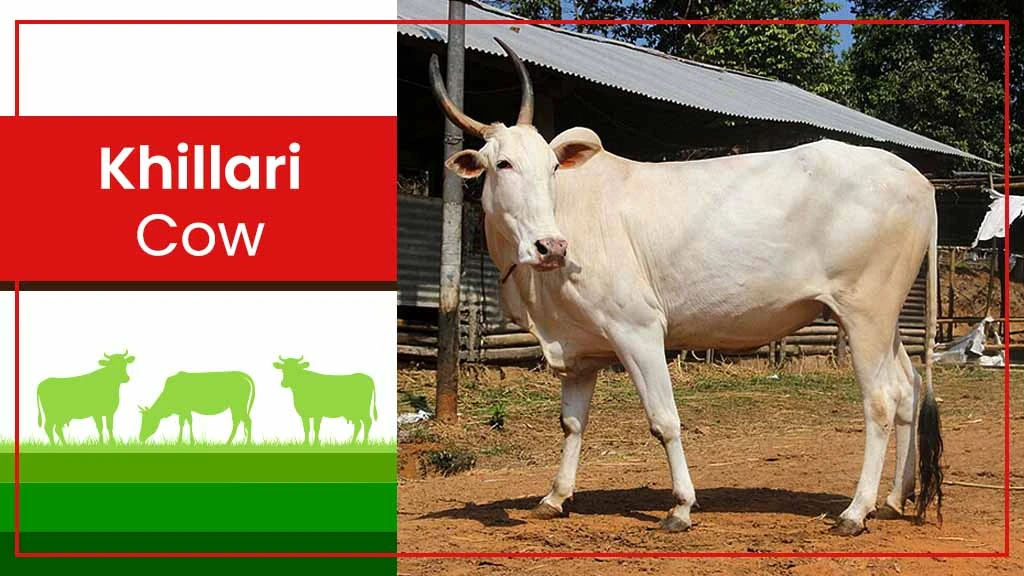
|
Breed Name |
Khillari |
|
Originated |
Maharashtra |
|
Average Milk Yield |
451 kg (Per Lactation) |
|
Breed Type |
Draught work |
|
Weight |
350 – 450 kg |
Khillari cows are originated from Solapur and Satara districts of Maharashtra. They are typically grey white in colour. They have peculiar black horns which sometimes turn pink. This breed resembles to the Hallikar breed. They are mostly used for bullocks.
Some Facts about Cow Breeds in India
- Smallest Cow: The Punganur dwarf cattle of the Chittoor District of Andhra Pradesh. It is the smallest cow in the world.
- Best Cow Breed: Sahiwal is the best cow breed in India.
- Highest Milk-Producing Cow: The Red Sindhi Cow is the highest milk-producing cow in India.
- Most Expensive Cow: The Ongole breed is the most expensive cow in India.
Frequently Asked Questions On Cow Breeds in India
1. Which Indian cow is best?
Sahiwal cow breed is the best in India.
2. Which cow gives 50 litres of milk in India?
Gir cow gives 50 litres of milk in India.
3. Which is the highest quality milk cow in India?
Tharparkar cow milk yields from 1800 kg to 2600 kg per lactation.
4. What is the age limit for cows?
The age limit for cows in India is around 20 years.
5. How many cow breeds are found in India?
Fifty-four cattle breeds are found in India, comprising milch (cow), draught, and hybrid cattle.


Related Blogs
